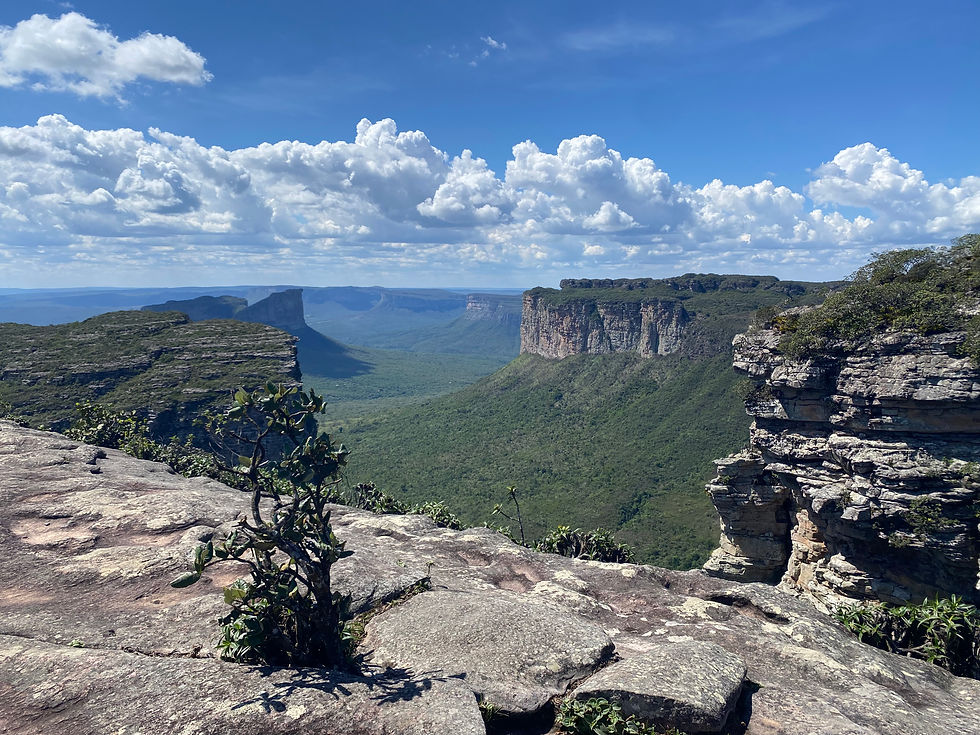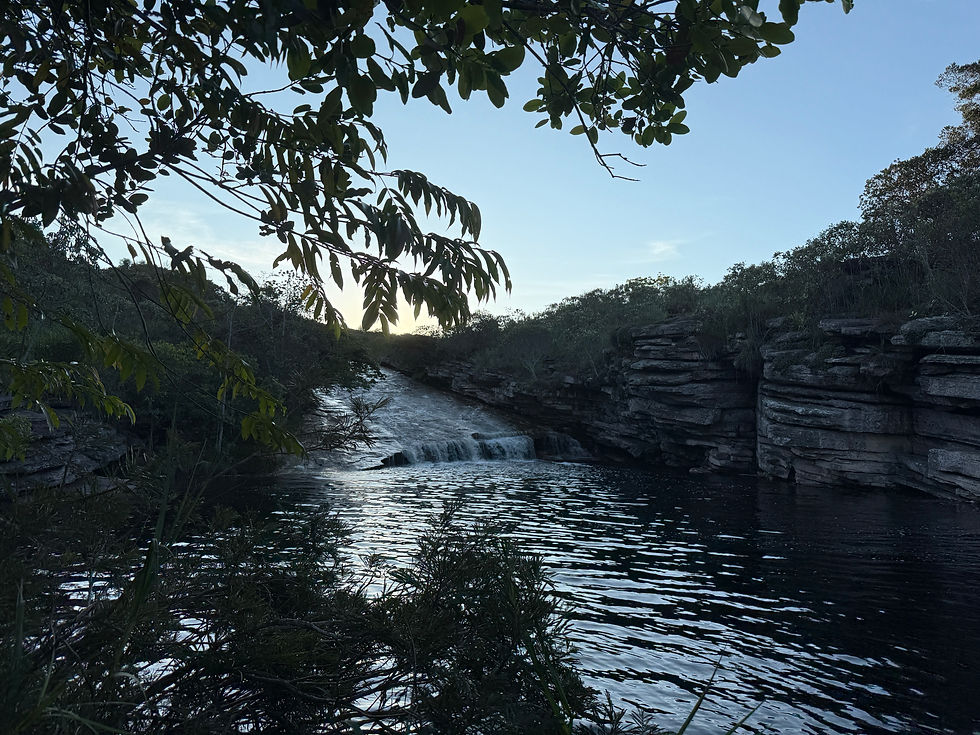A Guide to Chapada Diamantina: Best Hikes, Waterfalls & Swimming Spots in Brazil's Northeast
- Will Gerson
- Jul 18
- 3 min read
Updated: Nov 20
Located on a plateau deep in Brazil’s northeastern state of Bahia, the Chapada Diamantina is a rugged region that offers fantastic hikes, waterfalls, and outdoor adventures. Known in Portuguese as the ‘diamond plateau,’ the area is a meeting point of three distinct biomes: the Mata Atlântica (Atlantic Forest) that prevails along the coast, the cerrado (savanna) that occupies much of the center of the country, and the caatinga—a unique, semi-arid tropical ecosystem that exists only in Brazil.

The area is full of amazing landscapes, and there is no shortage of activities to fill your days here. Read on for a guide to some of the best things to do in this incredible national park.
Lençóis
The park has a beautiful, untouched feel to its nature, but the flip side of this tranquility is that its location is quite remote, located about six hours’ drive from Salvador, the Bahian capital. A car is essential to exploring the park, but I recommend first taking the bus from Salvador to Lençóis and then renting a car from there. Lençóis is a charming colonial town located roughly in the center of the park, and it makes for a perfect place to stay during your visit. For the car rental, check out Diamantina Locadora for good service and an affordable price.

Morro do Pai Inácio
This butte-like hill offers the most famous and stunning view in the park. A short and steep hike, no more than twenty minutes each way, will get you to the top, where you will be rewarded with 360-degree views of the valley, which looks almost like a tropical version of the Grand Canyon.

Local legend says that a slave named Pai Inácio had a romance with a farmer’s daughter; after the affair was discovered, he was chased to the top of the hill and, to avoid being shot, he jumped off the cliff holding an umbrella and miraculously glided to safety in the valley below.
Cachoeira do Mosquito
This 165-foot (50 m) tall waterfall is a great place for a refreshing bath to cool off on a hot day. It’s a short, twenty minute hike down to the waterfall from the entrance, and you should be dry by the time you return to the top.
The waterfall gets its name not from the bothersome insects but rather from small diamonds found here by miners in the 19th century, which they called ‘mosquitoes.’
Poço do Diabo
Another great spot for a refreshing dip in the water, at the base of a small waterfall roughly halfway between Morro do Pai Inácio and Cachoeira do Mosquito.

Poço Azul
This grotto contains a pristine and totally transparent natural pool, hundreds of feet deep. Visit in the middle of a sunny day to see the sun’s rays shine into the cave and illuminate the water a spectacular turquoise-blue. The entrance fee includes a life-vest and snorkel for you to swim around with. While you dry off, stop for a high-quality buffet lunch at Restaurante Dona Alice on the premises.

Cachoeira da Fumaça
Emptying 1,120 feet (340 m) into the river below, Cachoeira da Fumaça is Brazil’s second-tallest waterfall. The immense force of the surging water crashing below leads to water vapor rising back up to the top, giving the waterfall its name, fumaça (smoke). This is an awe-inspiring display of the power of nature and is not to be missed on your visit to the park.

The waterfall is accessed by a 3.7-mile (6 km) hike from the town of Caeté-Açu, steep uphill for the first half and flat for the second half. The trail is decently marked but can be a bit confusing to follow at times, so I recommend downloading AllTrails before you head out just to be sure.

Looking for more places to explore in the region? Visit our Bahia page here.







